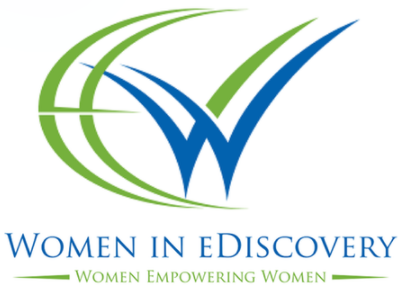Court Rules that Plaintiff’s Request for Data from Defendant is “Extraordinarily Burdensome”: eDiscovery Case Week
Why is a picture of a shark on this post? Because it’s Shark Week on the Discovery Channel (not electronic discovery of course, but the generic kind of discovery). To celebrate Shark Week in eDiscovery terms, we’ve decided to make this week eDiscovery Case Week on the eDiscovery Daily blog. We’ll cover four cases in the next five days (catching up on a couple from earlier this year) and will cover our Wednesday webcast Key eDiscovery Case Law Review for First Half of 2017 (click here to sign up for that) as well. Here’s the first case.
In Solo v. United Parcel Services Co., No. 14-12719 (E.D. Mich. Jan. 10, 2017), Michigan Magistrate Judge R. Steven Whalen agreed that the defendant showed that the level of data requested by the plaintiff “would be extraordinarily burdensome” and ordered the parties to discuss the defendant’s proposed methodology and “meet, confer, and agree on a mutually acceptable sampling methodology” if the plaintiff did not agree to the defendant’s approach.
Case Background
In this class action suit, the plaintiffs alleged that the defendant consistently overcharged for delivery charges that had a declared value of $300 or more. In an interrogatory, the plaintiffs requested the defendant to provide detailed information for packages with a declared value of $300 or more over the alleged overcharging period, which could extend as far back as 2008 from the end date of December 29, 2013.
In response, the defendant contended that providing the package-specific information requested would be excessively burdensome in terms of both time, manpower, and costs and indicated that the “package level detail” requested by Plaintiffs is only maintained in a “live” format (easily accessible electronically) for a limited time period and is then archived on backup tapes. To bolster its claim that the request was burdensome, the defendant estimated that it would take at least six months just to restore the archived tapes as described above, at a cost of $120,000 in labor, requiring its employees to take on responsibilities outside of their regular duties and that cost estimate did not include the time and expense of analyzing the data once extracted in order to answer the interrogatory.
Instead, the defendant provided an estimate of the number of packages with declared value over $300 that were shipped during the period June 30, 2013 to December 29, 2013 – this time period was chosen because its contract terms state that a customer must give notice of a billing dispute within 180 days, or the issue is waived.
Judge’s Ruling
In evaluating the defendant’s response to the plaintiff’s request, Judge Whalen stated: “I am persuaded that UPS has carried its burden of showing that producing package-specific information going as far back as 2008 would be extraordinarily burdensome, particularly at this stage of the proceedings. Given the scope of UPS’s business operations and the exigencies of its proprietary billing system, there is a valid business reason for maintaining ‘live’ data for a limited period of time and storing older data on backup tapes.” Judge Whalen also agreed with the defendant that if it prevailed on the 180 day limit issue, “the most likely period that will be found relevant will be the six-month time frame from June 30, 2013 to December 29, 2013.”
With that in mind, Judge Whalen stated: “The estimate that UPS produced for the six-month period encompassing the latter half of 2013 was based on a method that extrapolated “live” data from a more recent period. At the time this motion was filed, Plaintiffs were not privy to UPS’s methodology, given that it involved disclosure of proprietary information. However, now that a protective order has been entered [Doc. #74], UPS will disclose its methodology under the “attorneys’ eyes only” provision. It may be that Plaintiff is satisfied that UPS’s methodology is sufficient. If not, the parties will meet, confer, and agree on a mutually acceptable sampling methodology.”
So, what do you think? Did the defendant provide enough basis to show the plaintiff’s request to be extraordinarily burdensome? Please share any comments you might have or if you’d like to know more about a particular topic.

Case opinion link courtesy of eDiscovery Assistant.
Disclaimer: The views represented herein are exclusively the views of the author, and do not necessarily represent the views held by CloudNine. eDiscovery Daily is made available by CloudNine solely for educational purposes to provide general information about general eDiscovery principles and not to provide specific legal advice applicable to any particular circumstance. eDiscovery Daily should not be used as a substitute for competent legal advice from a lawyer you have retained and who has agreed to represent you.








